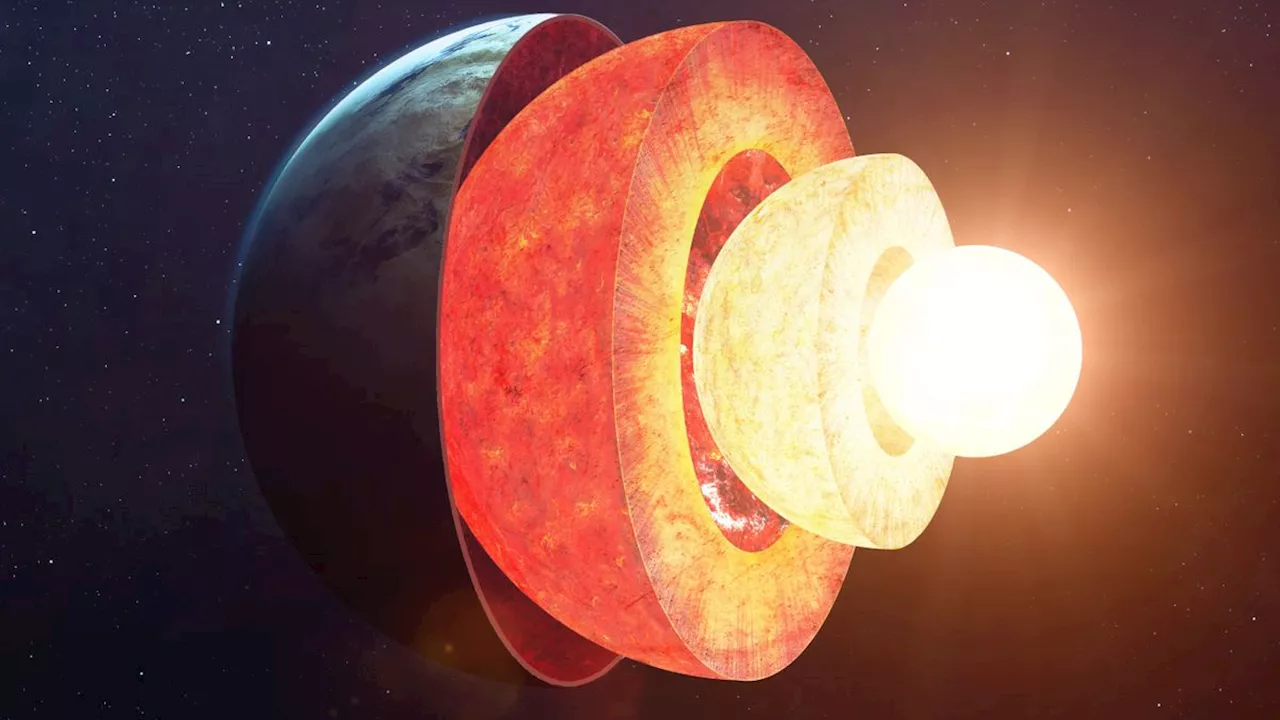New research suggests that the Earth's inner core, a solid sphere at the center of our planet, may not be static as previously thought. It appears to change shape in addition to its known fluctuations in rotation speed.
A new, detailed study of Earth's core reveals a surprising discovery: the rotating inner core not only changes in rotation speed but also appears to change in shape. Scientists have observed subtle variations in the way acoustic waves travel through the planet's center, suggesting that the inner core isn't a perfectly static sphere. This finding is a significant advancement in our understanding of the Earth's deep interior and its influence on planetary processes.
Earth's solid inner core is one of the most enigmatic objects in geophysics. It rotates within a layer of liquid outer core, influencing phenomena like the length of a day and the generation of the Earth's magnetic field. Due to its inaccessibility, scientists rely on indirect methods to study the core, primarily through seismic waves generated by earthquakes. By analyzing the patterns of these waves as they pass through the Earth, researchers can glean information about the core's composition, density, and even its movements. Previously, studies had shown that the inner core's rotation speed fluctuates, but this new research suggests that the core may also exhibit changes in its shape, possibly due to the interaction of the inner core with the surrounding, highly viscous outer core. This could involve minor depressions and uplifts along the boundary between the two layers, influenced by the flow of denser materials within the Earth.This discovery opens up new avenues of research into the dynamics of Earth's core and its effects on the planet as a whole. Further studies will be crucial to confirm and refine these findings, providing a deeper understanding of this vital, albeit hidden, engine of our planet
EARTH's CORE INNER CORE ROTATION SHAPE CHANGES SEISMIC WAVES GEOPHYSICS
United States Latest News, United States Headlines
Similar News:You can also read news stories similar to this one that we have collected from other news sources.
 Earth's Inner Core May Have a Hidden Innermost LayerNew research suggests that Earth's inner core, already known for its extreme heat and density, might have a smaller, even hotter layer at its center. Scientists analyzed seismic wave data and found evidence of distinct changes in how waves travel through the inner core, hinting at a possible two-layered structure.
Earth's Inner Core May Have a Hidden Innermost LayerNew research suggests that Earth's inner core, already known for its extreme heat and density, might have a smaller, even hotter layer at its center. Scientists analyzed seismic wave data and found evidence of distinct changes in how waves travel through the inner core, hinting at a possible two-layered structure.
Read more »
 Earth's Inner Core May Be Changing Shape and RotationNew research suggests that the Earth's inner core may be undergoing both shape and rotational changes. Analyzing seismic waves from repeating earthquakes, scientists discovered differences in the waves passing through shallow regions of the inner core, indicating possible shape alterations. This, combined with previous findings of a slowed rotation rate, provides a deeper understanding of the complex dynamics occurring deep within our planet.
Earth's Inner Core May Be Changing Shape and RotationNew research suggests that the Earth's inner core may be undergoing both shape and rotational changes. Analyzing seismic waves from repeating earthquakes, scientists discovered differences in the waves passing through shallow regions of the inner core, indicating possible shape alterations. This, combined with previous findings of a slowed rotation rate, provides a deeper understanding of the complex dynamics occurring deep within our planet.
Read more »
 Earth's Inner Core May Be Shape-ShiftingNew research suggests that the surface of Earth's inner core may be changing shape over short periods. Scientists studied earthquake waves and found subtle differences in their patterns, indicating a dynamic outer layer of the inner core.
Earth's Inner Core May Be Shape-ShiftingNew research suggests that the surface of Earth's inner core may be changing shape over short periods. Scientists studied earthquake waves and found subtle differences in their patterns, indicating a dynamic outer layer of the inner core.
Read more »
 Earth's Inner Core Is Changing Shape, Study FindsA groundbreaking study reveals that the Earth's inner core is not as solid as previously thought and its surface is undergoing structural changes likely caused by interactions with the turbulent molten outer core.
Earth's Inner Core Is Changing Shape, Study FindsA groundbreaking study reveals that the Earth's inner core is not as solid as previously thought and its surface is undergoing structural changes likely caused by interactions with the turbulent molten outer core.
Read more »
 Earth's Inner Core Shows Signs of Structural ChangeResearchers from the University of Southern California have made a groundbreaking discovery about Earth's inner core. Analysis of decades of seismic data reveals that the surface of the inner core is undergoing structural changes, suggesting it is not completely solid.
Earth's Inner Core Shows Signs of Structural ChangeResearchers from the University of Southern California have made a groundbreaking discovery about Earth's inner core. Analysis of decades of seismic data reveals that the surface of the inner core is undergoing structural changes, suggesting it is not completely solid.
Read more »
 Forces deep underground seem to be deforming Earth's inner coreSeismic waves suggest the planet's solid inner core is being pulled out of shape – and it has undergone these changes over just a few decades
Forces deep underground seem to be deforming Earth's inner coreSeismic waves suggest the planet's solid inner core is being pulled out of shape – and it has undergone these changes over just a few decades
Read more »
